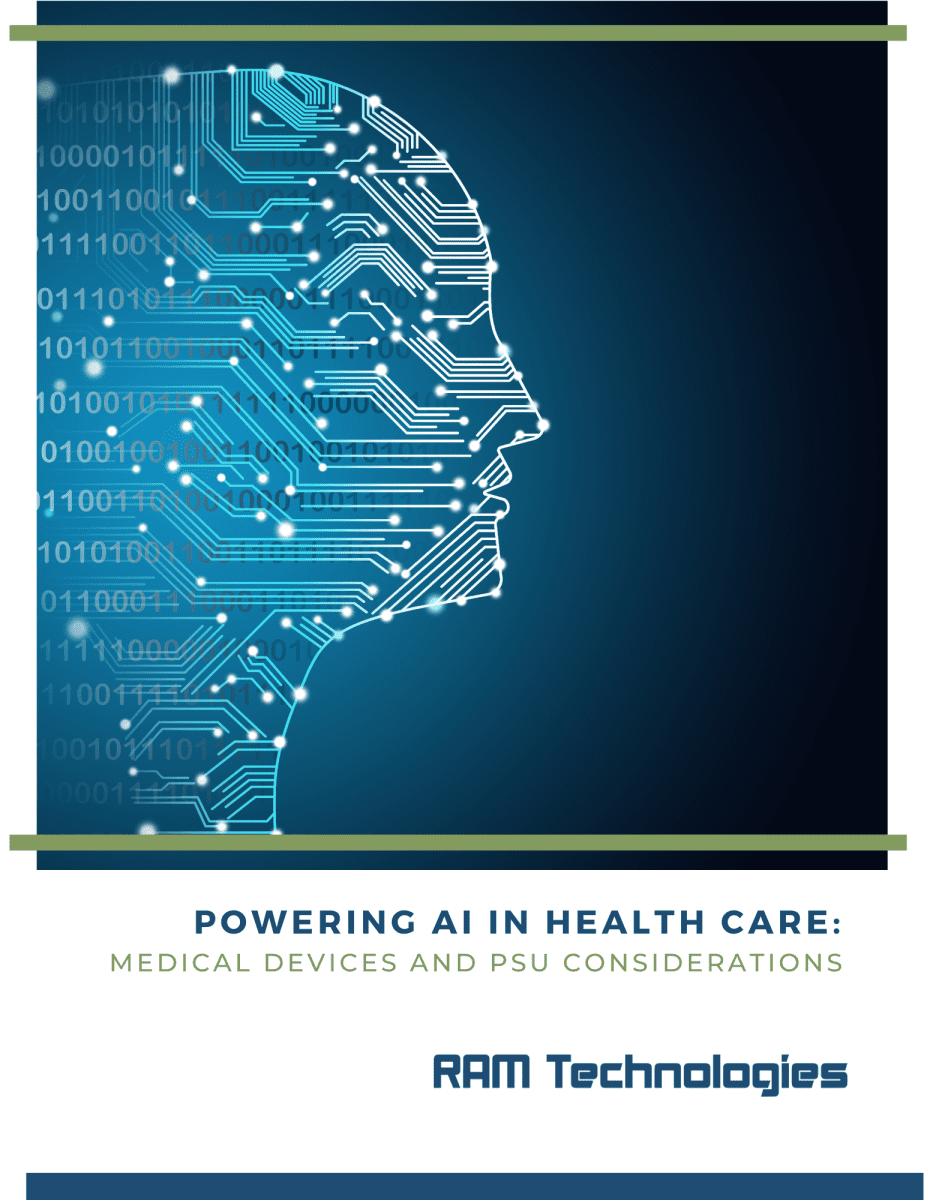Medical devices are no longer the passive instruments they once were. The rise of artificial intelligence (AI) and machine learning (ML) in health care and beyond mean that medical devices are now companions that work with practitioners to collect and analyze patient data. Medical devices will always rely on human expertise and discernment to operate at their highest capacity. However, AI optimization can shorten the distance between data gathering and valuable insights.
Predictive analytics can serve to forecast potential issues and help personalize care for patients in time-critical or nuanced scenarios. We’ll talk about the role of predictive analytics in health care and examples of medical devices using this technology. We’ll also discuss what medical device manufacturers need to consider when choosing a power supply for this resource-intensive equipment.
What is Predictive Analytics?
Humans have a knack for identifying patterns, but for emerging trends that are more subtle or complex, predictive analytics can provide a much-needed boost. Predictive analytics uses AI/ML tools to analyze data and make predictions about future events. It works by evaluating massive datasets and uncovering patterns that may not be immediately obvious to humans.
Using a data input, a machine learning algorithm is trained on the data and builds a model. New data is fed into the model, which can then analyze based on past inputs and forecast future outcomes.
When programmed effectively, predictive analytics can provide added accuracy at a much larger scale than humans can handle. It can uncover subtle patterns and relationships in data. In some instances, it may even be able to make real-time predictions.
The applicability of these predictions is reliant on the data quality. Medical device manufacturers and operators also need to consider the ethical implications of this kind of technology – for example, the possibility of bias in the data or algorithms. It can also be difficult to know how the AI reached its prediction, so understanding the explainability and algorithm behind the predictions is important.
What is the Role of Predictive Analytics in Health Care?
We’re likely only seeing the beginning of what predictive maintenance can do for medical devices. here are a few examples of applications that have been developed or are being explored.
Automated External Defibrillators (AEDs) and Implantable Cardioverter Defibrillators (ICDs)
For patients experiencing life-threatening arrythmias, defibrillators can be critical. Either implanted or external defibrillators can be used to shock at the right times and restore a more normal rhythm. Machine learning algorithms, in recent years, have been used to improve the discernment between shockable and non-shockable rhythms with greater accuracy. This increases the likelihood that the defibrillation will be successful.
Continuous Glucose Monitoring
Continuous glucose monitoring (CGM) sensors can improve the experience of patients with type 1 diabetes by personalizing the experience when integrated with AI. Machine learning can analyze past data and predict therapy adjustments that will work well for patients.
Predictive Maintenance
Predictive analytics be used beyond predicting patient outcomes. It can also help monitor the status of the equipment itself. Predictive maintenance is designed to alert operators when a component may need repair. This can help prevent more significant breakdowns. For example, a company like Citius Tech uses remote monitoring and status updates to determine when a piece of equipment may require a service visit.
Cardiac Rejection Grades
In 2020, Penn State researchers received a grant to use AI to analyze cardiac biopsy tissue in transplant patients. This was done to look at cardiac rejection grades, what immune cells look like to understand the mechanisms behind rejections, and potentially identify earlier signs of rejection to reduce the rates of infection and other complications. This research also had a prediction element. The hope is that the insights would reveal patterns that predict how well certain patients do long-term after transplants.
Power Supply Considerations for Predictive Analytics in Medical Devices
Well-designed predictive analytics applications in medical devices can improve patient outcomes, personalize care, and bring a more proactive approach to the healthcare experience for many patients. However, these new devices will require more resources because of how much data they’re analyzing. Reliable and consistent power is crucial, both for core functionality of the device and the enablement of real-time data processing and analytics.
RAM Technologies PC-based power supply units can meet these demands. They can also help medical device manufacturers create equipment that evolves with technological advancements. Our high-quality medical device power supplies are built to last, unlike PSUs that are built for standard PC applications. Our products don’t just meet the standards for medical devices, they’re built with the medical market in mind. We accomplish and consistently calculate mean time between failures (MTBF) close to one million hours. RAM makes this possible through careful design and high-quality components.
To learn more about PSUs built for high-powered computing and medical devices, and how they can support predictive analytics in health care, check out our product page or contact us with questions.
RAM Technologies’ power supplies are 60601-1 3.2 certified and meet 60601-1-2 EMC standards. When you’re designing your medical device and need help with a PSU, contact us for details.

Download the AI/ML Summary
Artificial Intelligence and Machine Learning (AI/ML) are changing the medical device landscape. Get a summary of the latest trends and where we think AI/ML can go with medical devices by downloading our guide.
More Resources:
Current Trends in the Medical Device Industry
Trends in FDA-Authorized AI/ML Devices
AI Medical Devices and FDA Approval: A Review in the Lancet
